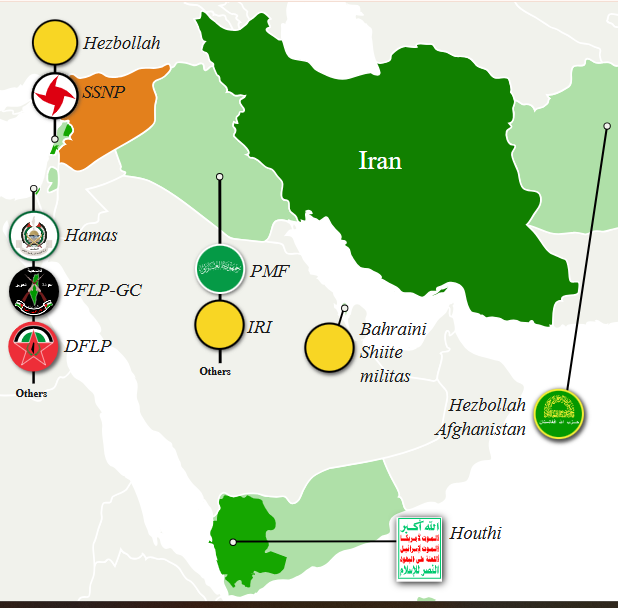The “Axis of Resistance” is a powerful and evolving alliance in the Middle East led by Iran. It brings together both state and non-state actors who share a common goal: resisting the influence of the United States, Israel, and their allies in the region. Though informal, this alliance has become a central force in many of the region’s conflicts, from Syria to Yemen, Iraq to Gaza.
The term Axis of Resistance first emerged in the early 2000s, especially after the U.S. invasion of Iraq in 2003. It was positioned as a direct response to the so-called “Axis of Evil” label given by U.S. President George W. Bush, which included Iran. Since then, the alliance has grown in size and reach, presenting itself as a resistance front against foreign occupation, Zionism, and Western intervention.
At the heart of this alliance is Iran. Through its Islamic Revolutionary Guard Corps (IRGC) and its Quds Force, Iran provides weapons, training, intelligence, and funding to many of its allies across the region. This support allows Iran to expand its influence without direct military involvement, relying instead on allied militias and political groups to carry out operations that align with Tehran’s interests.
Syria is a key state partner in the Axis of Resistance. Under President Bashar al-Assad, Syria has relied on Iran and Hezbollah for support during its long civil war. Iranian and Hezbollah fighters have helped Assad maintain control over key parts of the country. Hezbollah, based in Lebanon, is one of the most well-armed and organized non-state actors in the world. Formed in the 1980s with Iranian help, Hezbollah has fought multiple wars with Israel and continues to play a strong political and military role in Lebanon.
Palestinian groups such as Hamas and Palestinian Islamic Jihad also fall under this alliance. Although Hamas is Sunni and Iran is Shiite, they share a common enemy in Israel. Iran supplies weapons and financial aid to these groups, helping them maintain resistance efforts in Gaza and the West Bank. During recent conflicts, these groups have launched large-scale rocket attacks on Israeli cities, with Iranian support playing a key role in their capabilities.
In Iraq, several Shiite militias aligned with Iran operate under the umbrella of the Popular Mobilization Forces (PMF), also known as Hashd al-Shaabi. These include groups like Kata’ib Hezbollah, Asa’ib Ahl al-Haq, and the Badr Organization. They have been involved in combat against ISIS, but also in attacks on U.S. military bases and diplomatic missions in Iraq. These groups help Tehran project power within Iraqi politics and limit American influence.
In Yemen, the Houthi movement, officially called Ansar Allah, receives backing from Iran as part of the Axis of Resistance. Though more independent than other members, the Houthis have used Iranian-supplied drones and missiles to strike targets in Saudi Arabia and the UAE. More recently, they have disrupted global shipping routes in the Red Sea, drawing international concern.
This wide network allows Iran to conduct asymmetric warfare across multiple fronts. Through the Axis of Resistance, Iran can influence events without openly declaring war. The alliance creates a web of support that stretches from Tehran to the Mediterranean, often called the “Shiite Crescent” by analysts.
Iran’s strategic use of this network is seen as a response to decades of Western sanctions, military threats, and regional rivalries. By empowering local actors, Iran avoids direct confrontations while still challenging the status quo. Western governments and Israel view the Axis as a serious threat, accusing its members of terrorism and destabilizing the Middle East. Sunni-led governments like Saudi Arabia also see the alliance as a challenge to their power and regional security.
The Axis of Resistance has also shown signs of coordination with global powers. Reports suggest that Russian intelligence has cooperated with Iran during times of crisis. There are also growing ties between Iran and China, further complicating the regional balance. These developments show that the alliance is not just military, but also political and diplomatic in nature.
The Axis of Resistance remains one of the most important and controversial forces in Middle Eastern geopolitics. It shapes conflicts, influences governments, and challenges the presence of foreign powers across the region.







